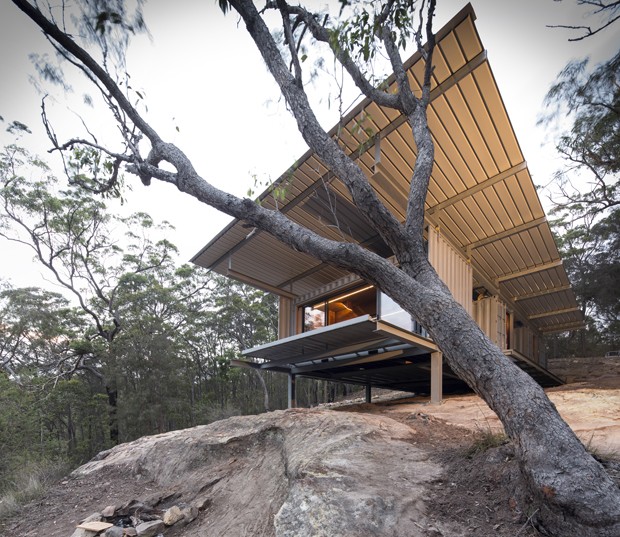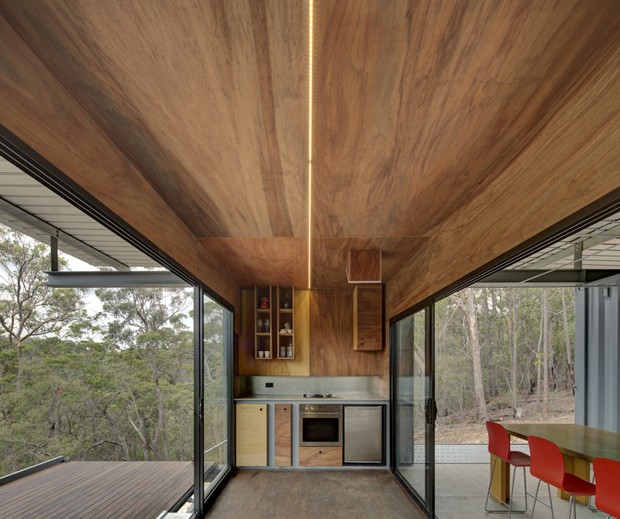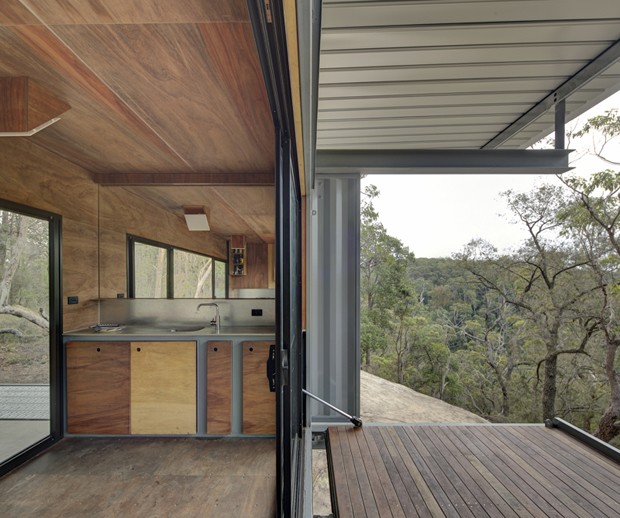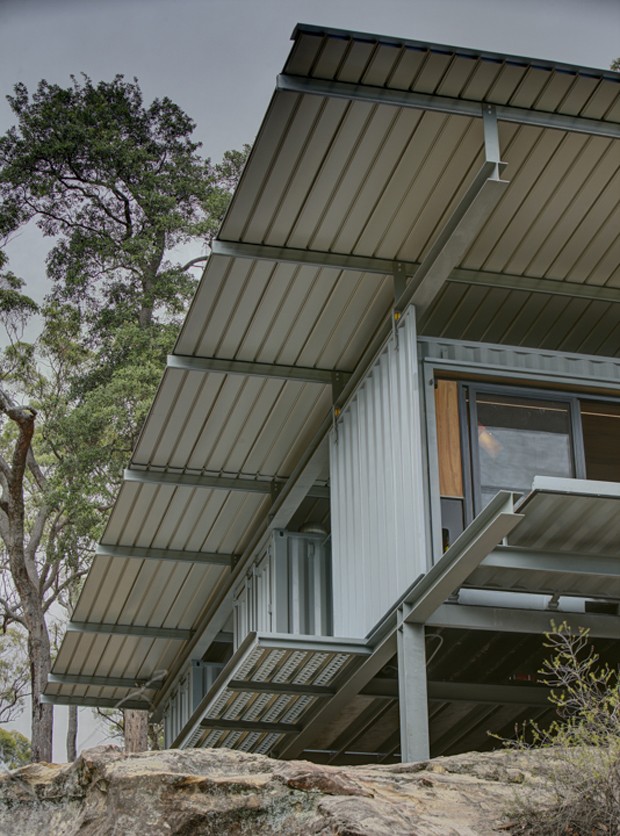A lightweight and flexible mountain bike base camp on the New South Wales Central Coast has won a category prize at the 2014 Sustainability Awards.
Outpost 742709-9 by Drew Heath Architects was picked from the pool of Small Commercial project finalists and celebrated by the judges for its minimal and gentle respect for the surrounding environment and its small-scale sustainability measures.
“Outpost was chosen for its efficient use of materials and space, durability, modularity and passive design,” the judge’s statement reads.
“It is an excellent example of how a building can interact with its surroundings quietly and with minimal impact.
“Its modularity and mobility also means it can be replicated and used over and over again in a multitude of ways.”
Drew Heath Architects was tasked by Mountain Bike Company to build a base camp for riders using the tracks, and he worked towards some basic principles he had set from the outset.
This included making the building as small as possible to fit in as many people as possible under the biggest lightweight roof that would protect it from the elements. It is about 45sqm internally and sleeps six.
The materials are all Australian made and have not travelled great distances. They are economically used structurally and are purposefully left in their raw state. The building can be unbolted and removed or recycled, or remodelled.
There is no heating or cooling required through its scale and ease of ventilation. It is well insulated with its double layer roof repelling the elements.
Photovoltaics power the building with a simple gas heater for water. Water is collected for all usage and onsite sewage is treated through an aerated toilet system.
The detailing is centred on durability, exposing just painted steel to the elements and protecting the timber internally.
Local tradesmen were used in the installation of the building and minimal site wastage occurred through its factory construction.


Key initiatives:
Good design can make small spaces work, and the project was always conceived as a small building with maximum impact and delivery – at 45sqm internally, it sleeps at least six
-
List of sustainable items includes on-site sewage, solar power for electricity and rainwater tanks for all water use
-
The potential of this building to be recycled, remodelled, removed and reused is supported by the use of the container as a moveable unit and a bolted together steel frame
-
Interior surfaces and joinery are all made of one pack of plantation hardwood plywood, with offcuts used to make small pieces of joinery throughout – shelves, light fittings and joinery


Photography by Brett Boardman
Click here for to see all the winners and commendations for 2014
All the finalists can be viewed in the video below:

